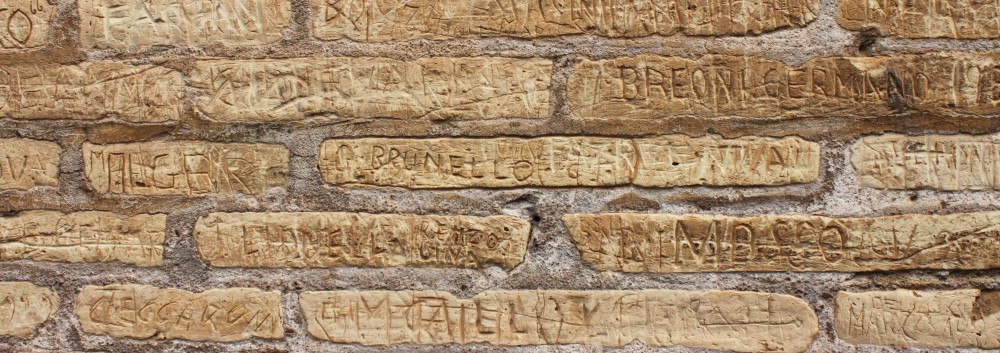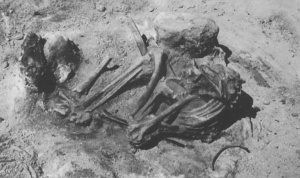So after the earlier (lengthy) posting about the history of archaeology, readers may have caught up with some of the problems that riddles archaeological reasoning and research. However, there are lots of highlights, and sometimes we actually do get to do something really valuable that has interest even outside of the field of archaeology.
Cue gender archaeology. In the early 1970’s, bouncing off the political revolution of women, Norwegian archaeologists especially started to investigate gender roles systematically, both looking for them in prehistory and in their own profession (Sørensen 2000:17-18). Before this, archaeology was largely androcentric [centered around men] in outlook, referring to prehistoric “man” and focussing on warriors, hunters (both presumed to be male) and “hard” aspects of society not reflected in the notion of femininity of the time. Sadly, androcentric determinism is still not conquered, but it has vastly improved since then!
To look for androcentrism in the profession was also important. Archaeologists had traditionally been men, historically even adventurous men, but had recently begun to see an influx of women, resulting in a female-dominated profession over much of Europe in 2014 (Lazar et al. 2014). It was important that the profession no longer be ruled by men in the sense that a female focus was needed to correct research and alleviate bias. Not to say that we need a 70 % female interpretation to correct the professional gender balance, but as at any given time a society should have been constituted by around half women and half men, that balance needs to be worked at still. We are sadly not there yet.
However, what gender archaeology has done since its beginnings, is to identify androcentrism at a level we may never before have considered. For instance, we (aka the ‘enlightened’ of us) tend to disagree with evolutionary biologists and -psychologists a lot. Let us take that standard phrase “Men hunted. Women gathered.” Why is this supposed to have been so? Some biologist would likely explain that with hormones. Ok, fair enough. But how come we overcame that and are not working across those lines any longer? When a woman becomes a hunter today (or a police officer, army personnel or bank robber), why is this possible without even the slightest concern for hormones? Why is it applauded when a man decides to stay at home with his children – and enjoys it? And why would we expect that evolutionary equals such as modern humans that had evolved at least 45 000 years ago (Fu et al 2013) would not be able to cross hormonal lines because they were slaves of their own chemistry? This is a logical breach that science does often neglect.
Archaeology can help by pointing to deterministic interpretations of the past. There is no real reason that we are now so “advanced” that we can do all these things that prehistoric humans did not – that is pure enlightenment thinking for you. In the Enlightenment (1700s), the idea of progress – that Western society was the most advanced – was what put down the modern notion of “primitive” in the first place, which allowed Britain and France to colonise half the world. I am sure most of us agree that was not the most advanced behaviour after all – to be fair, killing and subordinating for power must be quite a primitive mannerism, no? But the notion of primitive and “further along the lines of progress” (= the West) stuck, and is still visible in the notions of ‘developing’ nations, for example.
Through the interpretations of various ethnic tribes as primitive, researchers started to draw analogies to the past, and for a large part they still keep drawing them without thought for source criticism. However, this is just a reaction to a paradigm that is so automatic in us that we do not see it, just like we trust in modern medicine or agree that scientists, not priests, should publish in Nature: All results of Enlightenment thinking of progress and evolution. This is not always wrong, but when we have evidence for the opposite, it should be countered and reconsidered for that particular interpretation. This is where archaeology can help.
In 1939, a farmer discovered an extraordinary well preserved Mesolithic burial on his land at Barumnäset (Scania/Skåne) in Sweden. The skeleton was buried with a slotted, flint edged, spear and a bone chisel, and was quickly interpreted as a fisherman: a typical stone age man with typical stone age man-artefacts.
The burial in itself is nothing particularly astounding, apart from the preservation of its bones in the calcium-rich soils. Mesolithic burials are often placed in a hockey position, with a few artefacts as grave goods, such as the burials at Skateholm in the same county, and Bøgebakken, Vedbæk in Denmark. Upon a closer examination in 1970, however, researchers were astounded to discover that the skeleton was in fact female, 40-50 years of age and mother of several children. A newer investigation from 1996 interpreted her age as low as 35, based on x-rays of her dental nerves. She died between 7010 and 6540 BCE; approximately 9000 years ago. This places her in very late Maglemose or early Kongemose culture, and is well within the timespan of “primitive.” (Sten et al 2000).
Even if the fisher(?)woman from Barumnäs (also known as Bäckaskogskvinnan in Swedish) is part of a minority of finds, we do not know whether 1) the supposed male activities then were the same as now, in other words that male/female work division were divided by the same rules or that there was even a division of tasks (implicitly that the man was the head of the family, as in Christian, Western culture and other present-day cultures that originate from the same religious complex); or 2) that the under-representation is representative and not only a result of andro-coloured lenses seeing what they expect. What we do know is that she was a mother who has opened up for seeing other female opportunities in the hunter/gatherer Stone Age. It is likely that, regardless of work tasks, a stone age woman was as little a slave of her hormones as we are now. It is also likely that her idea of ‘feminine’ differed from the current, Western idea of fragile, docile, a loving mother more than her male counterpart is a loving father. What Archaeology can do, is to put this into focus, and help us to acknowledge older cultures like we should (however much PC) do today. Archaeology can help us see that we are not superior – if we let it.
BIBLIOGRAPHY
Fu, Qiaomei, Heng Li, Priya Moorjani, Flora Jay, Sergey M. Slepchenko, Aleksei A. Bondarev, Philip L. F. Johnson, Ayinuer Aximu-Petri, Kay Prufer, Filippo de, Cesare, Matthias Meyer, Nicolas Zwyns, Domingo C. Salazar-Garcia, Yaroslav V. Kuzmin, Susan G. Keates, Pavel A. Kosintsev, Dmitry I. Razhev, Michael P. Richards, Nikolai V. Peristov, Michael Lachmann, Katerina Douka, Thomas F. G. Higham, Montgomery Slatkin, Jean-Jacques Hublin, David Reich, Janet Kelso, T. Bence Viola, and Svante Paabo. 2014. Genome sequence of a 45,000-year-old modern human from western Siberia. Nature 514(7523): 445–449.
Lazar, Irena, Tina Kompare, Londen van, Heleen, and Tine Schenck. 2014. The Archaeologist of the Future is Likely to be a Woman: Age and Gender Patterns in European Archaeology. In Archaeologies 10(3): 257–280.
Sten, Sabine et al. 2000. Barumkvinnan. Nya forskningsrön. Fornvännen 95: 73–87.
Sørensen, Marie Louise Stig. 2000. Gender Archaeology. Cambridge: Polity Press.

